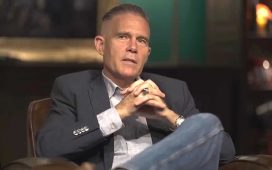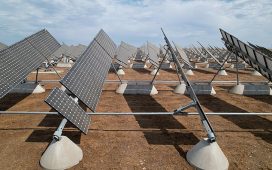I just read an extraordinary article by Anna Parker for this website, and it set my mind on fire. Parker interviewed Yannick and Ben Jakober, whose daughter died at 19. In their grief, they began building a unique, 165-strong portrait collection of children from the 16th to 19th centuries, many of whom did not survive to adulthood. The paintings are devastating, captivating, at times disturbing; I was moved and unsettled by this unusual monument to parental grief.
There was one particular line in the piece that floored me. Exploring the drive to continue adding painting after painting to the gallery they had built, Ben spoke of “kenophobia, the fear of empty rooms or voids: ‘When there was a space there, we had to fill it.’”
I cannot fathom the world-ending pain of losing a child, but I do recognise that terror of the void, that compulsion to fill a space; I think everyone can. This is the kenophobia of our own minds – a fear not of empty rooms, but of the empty feeling inside. A fear that we need to face if we want to build a better life.
We do all sorts of things to try to superficially fill up the emptiness of our lives and to defend ourselves against this feeling. I have pointed this out as a therapist to patients in my consulting room – and I have tried to deny it as a patient in my analyst’s consulting room. We might try to run away from the feeling by having sex or taking drugs or overexercising; we might try to hide the void from others and from ourselves with envy-provoking Instagram stories. We might try unconsciously to distract ourselves by dramatically breaking up and making up with friends and partners; we might try to fill the space by eating too much or shopping online.
Would capitalism survive if we weren’t constantly seeking to fill this void? Maybe every political ideology is just a different false solution to the same problem.
I think it can also be one part of the untold story behind people’s experiences of attention deficit hyperactivity disorder, emotionally unstable personality disorder or seasonal affective disorder. Our terror of emptiness might be part of the reason we keep getting distracted and can never complete tasks, keep finding ourselves in conflict in our relationships, feel so low.
We might also seek to fill the emptiness with something that looks positive on the outside, such as setting up a charity to help others or cooking a meal for a friend, even having a child (or writing a fortnightly column for the Guardian). Unfortunately, none of this actually fills the void; quite the reverse. Running away from it makes the emptiness far more terrifying, like the monsters that chase us in our dreams.
What can help is recognising that denying this feeling is making things worse – not just for ourselves, but for our loved ones, too. We might then realise that there is an alternative: to tolerate the feeling, to turn towards it and try to understand it.
While we are stuck on the hamster wheel of trying to get away from a feeling of emptiness, it is not possible for us to stop and realise that, in reality, we have the capacity to tolerate it. When we jump off that wheel, we can discover that the feeling is survivable. We can then take a breath, realise that the monster of our dreams may not be as frightening as it appears and begin to nurture an interest and curiosity in what we have been refusing to look at. That is our chance to discover that the emptiness might not be as empty as we assume it is.
It might be that there are all sorts of feelings in there. Unwanted feelings that are being emptied out – emptied out as we empty our bank account buying another pair of shoes, or as we filter out the blemishes in photos to provoke the envy in others that we cannot bear to feel ourselves, or as we make our children responsible for taking care of our anxieties. Unwanted feelings of pain, intrusion, abandonment, exclusion, terror, rage, self‑loathing – and terrible, terrible grief.
It might sound as if I am judging the running away. I am not. I think it is the most understandable, human, instinctive reaction to loss and trauma. I also recognise that if we keep doing it, we pay a very high price. And that after an instinctive reaction, it may be possible to allow space for a more reflective response. Turning towards these feelings and feeling them, allowing them into our conscious minds and giving them a voice – this is how we can work towards a more solid sense of ourselves. It is a powerful and profound transformation, from emptying yourself out to understanding why you sometimes feel empty.
It is the difference between desperately running away from yourself and going on an invigorating run. Between using your child to get rid of your difficult feelings and growing a capacity to help your child digest their own. Between starting a charity because you are trying to undo your own pain and burning out and, instead, grieving your loss and through that process developing the courage to stand with others in their grief.
It is the difference between building a life that looks better to others on Instagram and building a life that feels more meaningful to you.











